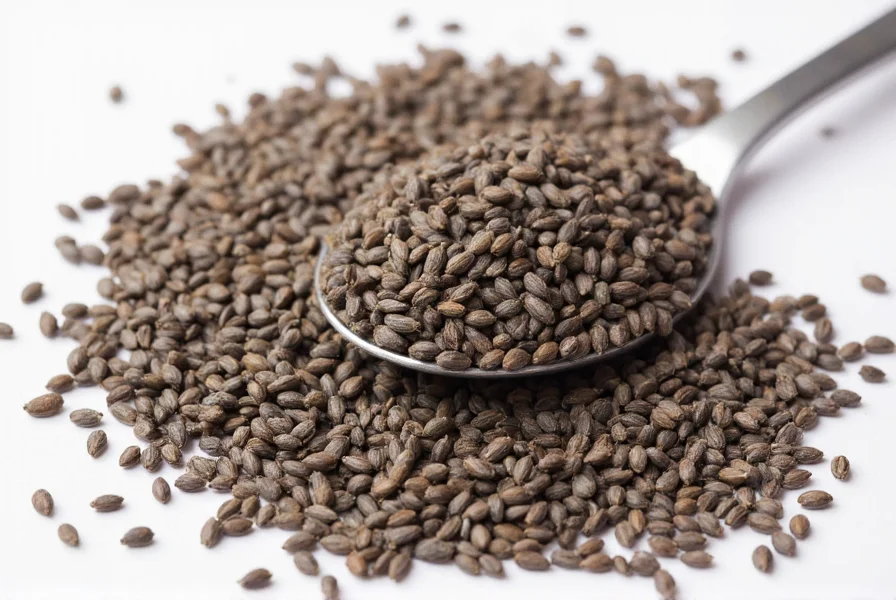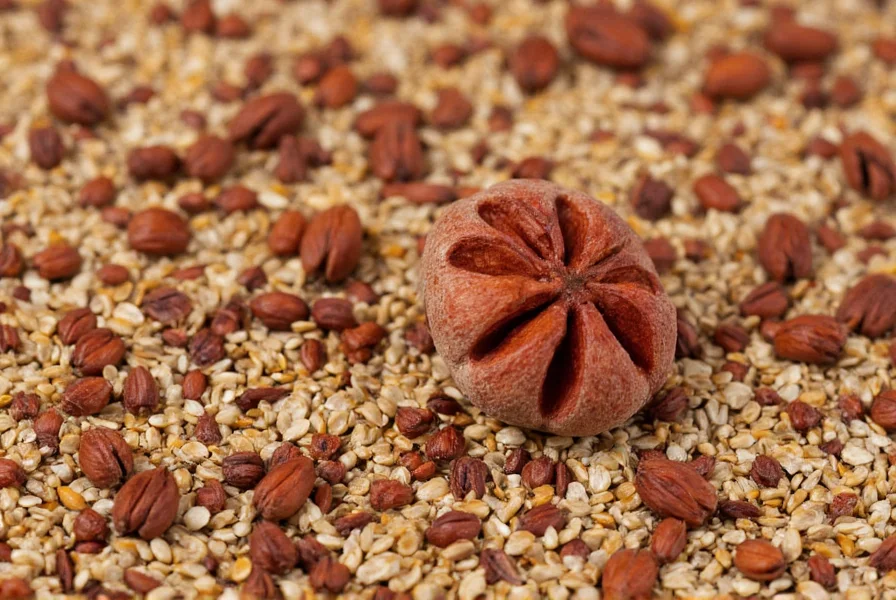Aniseed (Pimpinella anisum) is a flowering plant in the celery family whose seeds are widely used as a spice. Native to the eastern Mediterranean and Southwest Asia, aniseed has a distinctive sweet, licorice-like flavor due to its primary compound, anethole. It's commonly used in baking, liqueurs, and traditional medicine worldwide. This comprehensive guide explores the botanical properties, culinary applications, health benefits, and proper usage of this ancient spice.
Botanical Background and History
Aniseed comes from Pimpinella anisum, an annual herb that grows 12-24 inches tall with feathery leaves and small white flowers. The plant produces crescent-shaped seeds that are harvested when ripe and brown. Historical records show aniseed was used in ancient Egypt around 1500 BCE and mentioned in the Old Testament. Roman naturalist Pliny the Elder documented its use for digestive issues, while medieval Europeans valued it as both medicine and culinary spice.

Culinary Applications of Aniseed
The culinary uses of aniseed in baking and cooking span multiple cultures. In Mediterranean cuisine, it's essential for flavoring breads like Italian pizzelle and Greek tsoureki. German bakers incorporate it into springerle cookies, while Middle Eastern chefs use it in spice blends for meats and stews. The distinctive flavor profile of aniseed makes it perfect for:
- Flavoring liqueurs including ouzo, arak, and anisette
- Enhancing fruit preserves and compotes
- Adding depth to tomato-based sauces
- Complementing fish dishes in Scandinavian cuisine
- Creating traditional digestive biscuits
When working with aniseed, remember that whole seeds maintain their flavor longer than ground. For maximum flavor extraction in baking, lightly toast the seeds before grinding. The optimal ratio for aniseed in bread recipes is typically 1-2 teaspoons per loaf, while liqueur production often uses 10-15 grams per liter of alcohol.
| Spice | Botanical Name | Flavor Profile | Primary Compound | Common Uses |
|---|---|---|---|---|
| Aniseed | Pimpinella anisum | Sweet, licorice-like | Anethole (80-90%) | Baking, liqueurs, traditional medicine |
| Star Anise | Illicium verum | Stronger, more intense licorice | Anethole (80-90%) | Chinese cuisine, pho, mulled wines |
| Fennel Seed | Foeniculum vulgare | Milder, sweeter licorice | Anethole (50-60%) | Italian sausages, breads, digestive teas |
Aniseed vs Star Anise: Understanding the Differences
Many people confuse aniseed with star anise, but they come from completely different plant families. True aniseed (Pimpinella anisum) produces small, oval seeds from an annual herb in the Apiaceae family, while star anise (Illicium verum) is the star-shaped fruit of a tree in the Schisandraceae family. Though both contain anethole and share similar flavor profiles, they have distinct characteristics.
The aniseed flavor profile is generally sweeter and more delicate than star anise, which has a stronger, more intense licorice note with subtle bitter undertones. Culinary professionals note that aniseed works better in baked goods and light sauces, while star anise shines in slow-cooked dishes and robust broths. Understanding these differences helps home cooks select the right spice for specific recipes when exploring aniseed culinary applications.
Health Benefits of Aniseed: What Research Shows
Traditional medicine systems have used aniseed for centuries to address digestive issues, respiratory problems, and menstrual discomfort. Modern research provides some validation for these traditional medicinal uses of aniseed. A 2016 study published in the Journal of Ethnopharmacology demonstrated that aniseed extract exhibited significant anti-spasmodic effects on intestinal muscles, supporting its traditional use for indigestion.
Additional research suggests potential benefits:
- Digestive health: Anethole helps relax gastrointestinal muscles, reducing bloating and gas
- Respiratory support: Compounds in aniseed may help loosen mucus and ease coughs
- Hormonal balance: Some studies indicate potential benefits for menopausal symptoms
- Antimicrobial properties: Laboratory tests show activity against certain bacteria and fungi
When preparing aniseed tea for health benefits, use 1-2 teaspoons of crushed seeds per cup of boiling water, steeped for 10 minutes. This traditional preparation method maximizes the extraction of beneficial compounds while creating a soothing beverage.
Practical Tips for Using Aniseed
Mastering how to grind aniseed seeds properly ensures maximum flavor in your dishes. Whole seeds should be lightly toasted in a dry skillet for 1-2 minutes until fragrant, then cooled before grinding. Use a spice grinder or mortar and pestle for best results, as aniseed's oily nature can gum up blade grinders.
For baking applications, incorporate ground aniseed into dry ingredients to ensure even distribution. In savory dishes, add whole seeds early in the cooking process to allow flavors to infuse, then remove before serving. When making aniseed-infused simple syrup for cocktails, use a 1:1 ratio of seeds to sugar and let steep for 24 hours before straining.
Proper storage methods for aniseed are crucial for maintaining quality. Keep whole seeds in airtight glass containers away from light and heat. Stored properly, they retain optimal flavor for 12-18 months. Ground aniseed loses potency more quickly and should be used within 6 months. For extended storage, consider freezing whole seeds in vacuum-sealed bags.
Safety Considerations and Potential Side Effects
Aniseed is generally recognized as safe when consumed in typical food amounts. However, certain precautions should be noted when exploring aniseed health benefits. People with estrogen-sensitive conditions should use caution, as aniseed contains compounds with potential estrogen-like effects. Those with allergies to plants in the Apiaceae family (carrots, celery, parsley) may experience cross-reactivity.
Pregnant women should avoid medicinal amounts of aniseed, as high doses might stimulate menstruation. The European Medicines Agency recommends not exceeding 200mg of aniseed essential oil daily. When using aniseed medicinally, consult with a healthcare provider, especially if taking medications for diabetes, blood clotting, or hormone-related conditions.
Frequently Asked Questions
What is the difference between aniseed and star anise?
Aniseed comes from the Pimpinella anisum plant and consists of small, oval seeds, while star anise is the star-shaped fruit of the Illicium verum tree. Though both contain anethole and have similar flavors, they are from completely different plant families. Star anise has a stronger, more intense flavor and is commonly used in Asian cuisine, while aniseed is traditional in Mediterranean and Middle Eastern cooking.
Can aniseed help with digestion?
Yes, aniseed has been traditionally used to aid digestion. The compound anethole helps relax gastrointestinal muscles and may reduce bloating and gas. A 2016 study published in the Journal of Ethnopharmacology found that aniseed extract demonstrated significant anti-spasmodic effects on intestinal muscles. Drinking aniseed tea after meals is a common traditional remedy for indigestion.
How should I store aniseed to maintain freshness?
Store aniseed in an airtight container away from light, heat, and moisture. Whole seeds retain their flavor longer than ground aniseed - typically 1-2 years when properly stored compared to 6-12 months for ground. For maximum freshness, keep in a cool, dark cupboard rather than near the stove. You can also store aniseed in the freezer for extended shelf life without significant flavor loss.
Are there any safety concerns with consuming aniseed?
Aniseed is generally safe when consumed in typical food amounts. However, people with estrogen-sensitive conditions should use caution as aniseed contains compounds that may have estrogen-like effects. Those with allergies to plants in the Apiaceae family (like carrots, celery, or parsley) may experience allergic reactions. Pregnant women should avoid medicinal amounts as high doses might stimulate menstruation. Always consult with a healthcare provider before using aniseed medicinally if you have health concerns.











 浙公网安备
33010002000092号
浙公网安备
33010002000092号 浙B2-20120091-4
浙B2-20120091-4